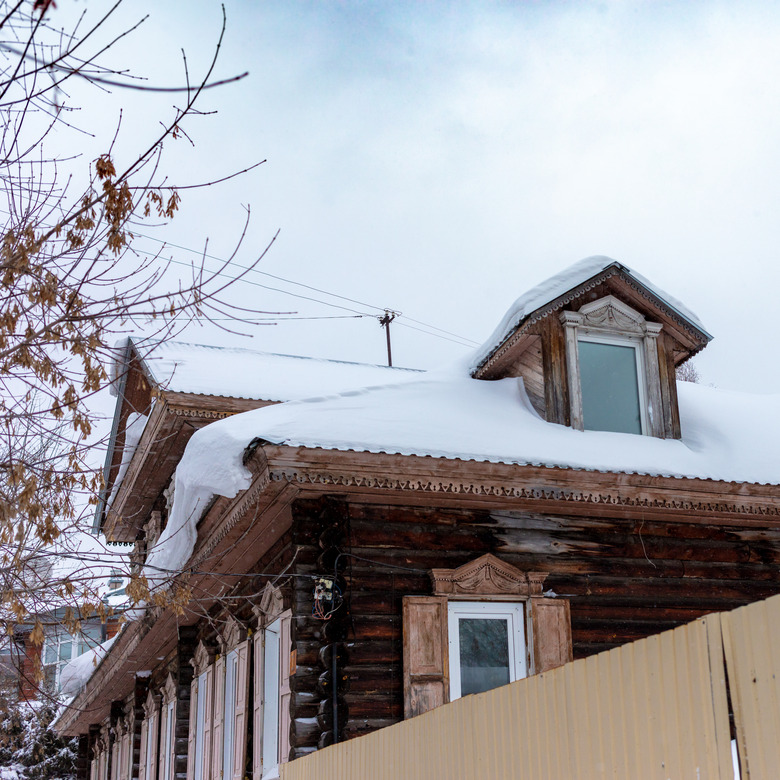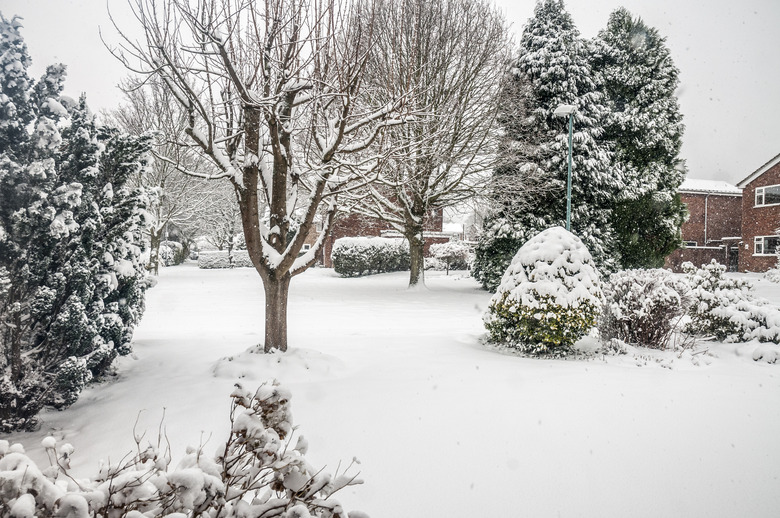A Homeowner's Guide To Winter Landscape Care
We may receive a commission on purchases made from links.
Although it may not look like much is happening in your winter landscape, your plants are actually working quite hard below the surface. Even during the winter months, plants need to absorb adequate moisture to keep their roots healthy, and many gather and store nutrients from the soil to use in the spring. With a little help from you, your winter landscape will give way to lush and healthy growth in the spring.
Protect Trees and Shrubs
Protect Trees and Shrubs
Established trees and shrubs can generally hold their own against old man winter's cold temperatures, but snow loads may be a different story. Wet snow gets heavy in a hurry and could break small or weak branches, so protecting your trees and shrubs is an essential part of landscape maintenance in the winter season.
Take a look at your trees and shrubs early in the winter season. If you see branches that are already dead or damaged, cut them out of the tree before the snow starts falling. If you find small or weak branches close enough, tie them to a stronger branch if you can. This allows weaker branches to share the load rather than supporting the snow without help. Take care when manipulating these branches, however, so tht you don't move them too far and accidentally break them.
When snow does grace your winter landscape, gently brush it off any problematic branches to prevent them from breaking. You can brush away the snow, but don't just grab the branch and shake off the snow. Doing so can damage the tree.
Protecting the tree limbs from the snow is important but don't forget to protect the trunk as well. Even if they leave your plants alone during the summer, hungry deer may nibble on tree bark over the winter. According to the Cooperative Extension System, beavers, mice, rabbits, bears and porcupines can also damage tree trunks. You can protect your tree by wrapping it in chicken wire or hardware cloth (for smaller animals such as mice and rabbits) to keep critters out.
Watch Young Plants
Watch Young Plants
Even plant species that tolerate winters well once established may need a little help during their first cold season. Some plants lift themselves out of the soil when the temperatures drop, so check new plantings throughout the winter. If you see a plant that's tried to jump out of the ground, gently push it back into place.
After replacing the plant, spread an inch of mulch or compost over it. Mulch prevents sunlight from reaching the plant and warming the soil around it during the day. Keeping the ground colder minimizes the winter freeze and thaw cycle, which is what pushed the plant out of the soil.
It's also a good idea to wrap young or delicate plants to provide an extra layer of warmth. If you do so, choose a breathable fabric like burlap to allow ample airflow. Choose lighter colors over darker ones as well. A dark covering may absorb too much heat on sunny days and may bake your plant rather than just warming it up a few degrees.
In flower beds both old and new, spread about 2 inches of mulch over the bed when winter comes. Mulch helps to insulate your perennials during the winter so they can come back strong in the spring. Note that winter mulching is done differently than spring mulching. In the spring, you'll keep mulch an inch or two away from your plants to discourage rot. In the winter, however, you simply mulch over the entire bed, spreading mulch right on top of plants that have died back for the winter.
Winter Landscape Watering
Winter Landscape Watering
Many plants go dormant during the winter months, but that doesn't mean they don't need any water. Dormant plants need much less water than actively growing or blooming plants, but they still need to keep their roots moist and healthy. Your plants will likely do fine if there is adequate rain or snowfall over the winter, but keep an eye on them.
If the ground does dry out, you'll need to water your lawn and flower beds to keep them healthy. Check sheltered plants too. Planting beds under a roof overhang or in other sheltered areas may not get enough water even during snow and rain showers.
In southern climates, you may need to water periodically all winter. In colder areas, stop watering your plants once the ground freezes. Your neighbors may be in disbelief that you're you watering your plants in the winter, but you'll have the last laugh when your landscape blossoms quickly in the spring.
Winter Lawn Care
Winter Lawn Care
As winter weather begins to creep in, keep an eye on the weather forecast. A few days before the first frost is anticipated, rake up the last of the fall leaves from your yard and aerate the lawn. This gives your grass one last chance to breathe some fresh air before it goes dormant.
After aerating, Scotts recommends winter lawn food. The grass will store the nutrients you feed it over the winter and use them to burst back to life quickly in the spring. Your lawn will look lush and green before your neighbors' lawns and will be strong enough to resist weeds, insects and diseases much earlier in the growing season.
Once the first frost hits and your lawn goes dormant, try to keep off the grass as much as possible. You can break frozen grass blades if you walk on them, and doing so can leave unsightly brown footprints in the lawn everywhere you step.
Winter Pruning Tasks
Winter Pruning Tasks
Late winter is an excellent time to prune many plants. Doing so late in the winter shortens the amount of time the pruning wound stays open before new growth begins. It also encourages rapid growth in the spring.
Exercise caution when pruning your winter landscape, however. Some plants, like crape myrtle (Lagerstroemia indica, USDA hardiness zones 6-9), butterfly bushes (Buddleja davidii, zones 5-10) and fruit trees do well when pruned in the winter. Others, such as rhododendrons (Rhododendron spp., zones 3-9) and some types of hydrangeas (Hydrangea spp., zones 3-9) prefer spring prunings.
References
- Cooperative Extension System: Barkstripping
- Scotts: Winter Lawn Care Tips
- BrightView: 6 Do's and Don'ts for Winter Landscape Care
- National Association of Landsape Professionals: A Seasonal Guide: Winter Lawn and Landscape Care
- Arbor Day Foudation: Crapemyrtle (Crape Myrtle)
- The Old Farmer's Almanac: Growing Butterfly Bush
- The Old Farmer's Almanac: Growing Rhododendrons and Azaleas
- The Old Farmer's Almanac: Growing Hydrangeas

